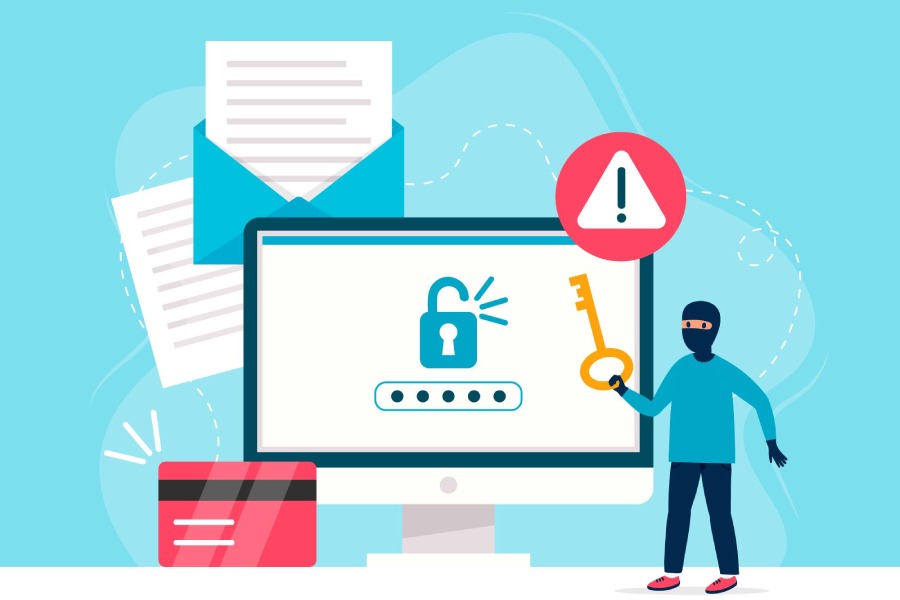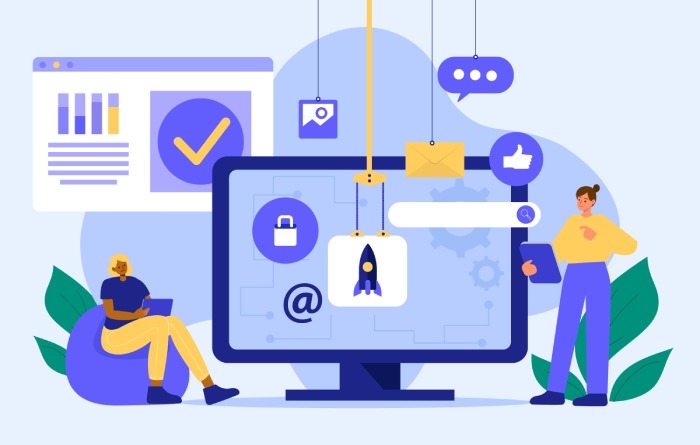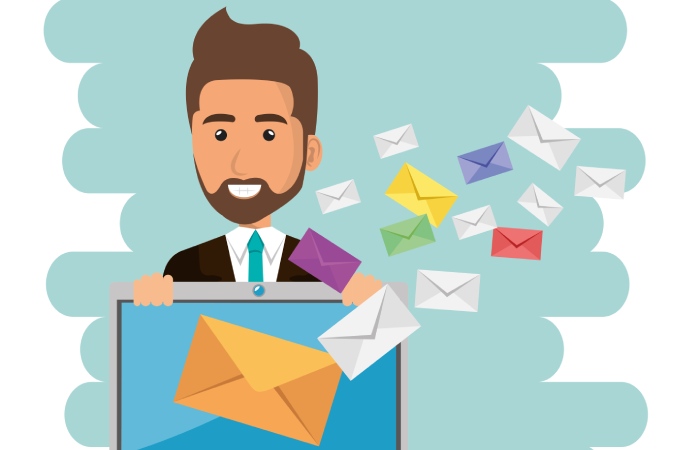Cybercriminals are continually targeting business emails, one of the most effective marketing tools for global businesses. This post sheds light on the top threats to email marketing in 2023 and shares the top email marketing security strategies businesses need to follow.
Emails are the most effective marketing tools for SMBs and SMEs, with an impressive ROI (Return on Investment) of $36 per each $1 spent. With over 64% of global businesses employing email marketing, threat actors have taken an affinity towards emails.
This is why there is a significant increase in phishing and scamming cybercrimes, hurting businesses and consumers. The best way to ensure the phishing protection of the enterprise and healthy business growth and productivity is email security and the implementation of secure email marketing strategies.
Top Threats to Email Marketing in 2023
Before delving into the corrective measures and improving email marketing security, businesses need to understand the threats they will face this coming year. Some of the top threats to email marketing include:
- Phishing: Without a doubt, phishing is the top and most dangerous email threat to organizations and businesses. Crowned as the most common cybercrime in the world, phishing is a social engineering attack where threat actors use tactics and manipulate innocents to steal their credentials and personal details by luring them to authentic-looking fake websites. Phishing links or attachments are also used to deliver Malware and spyware onto the victim’s devices, gain entry into the organizational network, and steal the victim’s sensitive information for impersonation, blackmail, scams, and more.
- Email Spoofing: Email spoofing is confused or attributed to phishing but involves threat actors impersonating genuine organizations, customers, partners, vendors, and more to gain access to the organizational network or personal information. With closely crafted email domains to send spoofing emails, cybercriminals can dupe the workforce and carry out various malicious activities.
- Spam Emails: Spam emails are sent by marketing enterprises and are unsolicited emails. These may contain malicious attachments or phishing links. However, even if they are clear and are only promotional, these can easily clog up consumer emails and cause a bad reputation for your domain, so it would be best to avoid it. Spam emails can be fought by improving email deliverability, so spam filters do not flag the emails your enterprise sends. The following sections also include how to improve email deliverability.
- BEC (Business Email Compromise): Threat actors have discovered that emails within an organization are easily trusted, which is why BEC has become a significant threat to email security, costing nearly $2.4 billion in losses in 2021. With malicious actors and cybercriminals impersonating managers, executives, and the C-Suite, BEC is an email marketing threat, leading to the loss of critical financial information and cybercriminals making away with this.
- Malware and Ransomware: Malware and ransomware are among the top threats, as these are sent as files via email attachments or phishing links. Malicious software or Malware is designed to steal, encrypt, or delete all of the victim’s data. If the threat actors deploy Malware and ask for ransom in exchange for decryption, it is ransomware. Both these malicious categories are incredibly costly for businesses as they lead to a loss of reputation and customer base and are a sinkhole of finances since enterprises have to deal with regulatory and remedial costs.
Business Essentials: Email Marketing Security Strategies for 2023
Keeping the customers requires the protection of the clientele from email attacks, and growing the business requires adequate security and the best email marketing strategies. To achieve both, businesses need to focus on the following.
Authentication and Authorization
Authenticating the email content to verify that the email originated at the business and authorization to restrict access to email marketing campaigns are methods that go a long way toward email security.
By employing robust email authentication standards like SPF (Sender Policy Framework), (Domain-based Message Authentication, Reporting, and Conformance), and DKIM (Domain Keys Identified Mail), businesses can ensure that all emails are digitally signed and authenticated, ensuring email security with phishing protection and improving email deliverability.
On the other hand, using an “Allowlist” of approved senders for consumers and restricting business data to separate IP (Internet Protocol) addresses, and employing MFA (Multi-Factor Authentication) are some methods that ensure only authorized individuals access the critical details.
Email Server Protection
One of the best steps businesses can take to improve email marketing security is ensuring the protection of email servers and keeping them clean. Businesses should follow the 4 Cs:
- Continually scan email software for viruses.
- Carry out internal risk audits for vulnerability assessment.
- Clean and Update emailing lists to eliminate spam trap email IDs.
- You may use an email finder tool like ContactOut with verification capabilities to clean up your email list.
- Control access to the email marketing list to ensure confidentiality.
Email Encryption
Encrypting marketing emails is a sure way of improving email security. Since an email is encrypted, it will only be read by the intended recipient, and the threat actor will not be able to misuse the email due to the encryption. When threat actors cannot see the contents of a marketing email, they cannot impersonate any ongoing email marketing campaign, thus ensuring a better email security posture.
Workforce and Executive Education
Protecting a business has become a responsibility rather than an achievement. This begs to raise awareness and educate the workforce about cyber and email threats, so they know how to stop potential attacks.
Furthermore, with an 84% surge in BEC attacks, it is paramount that the C-Suite also privy themselves to these threats to be on their guard against email threats. To ensure a security-first culture within the organization, businesses should train everyone on identifying email spoofing and phishing attacks, conduct regular seminars and phishing awareness training schedules, and continually send security articles and blogs about the latest security threats.
Additionally, businesses should provide guidelines and essential steps to follow if they encounter an email threat, report malicious emails, and deal with fraudsters.
Such security-focused training can run alongside other education and career development programs aimed at up-skilling your email marketing team members. It’s just as important to empower them with capabilities and tools for things like copywriting and hassle-free photo editing as it is to regularly hone their phishing email detection capabilities.
Assess Hosting Providers and Provide VPNs
Since hosting providers handle critical customer data, businesses should assess these before selecting a reliable hosting provider that provides robust physical and digital security, protects data, and has a positive reputation.
Another crucial thing for businesses to understand is securing all endpoints. With WFH (Work From Home) becoming a part of the digital ecosystem, entry points for threat actors have increased. Thus, businesses should invest in a VPN (Virtual Private Network) and issue these to improve email marketing security, especially for remote employees.
By securing public networks with VPNs and enhancing the privacy of the workforce by hiding their IP addresses and encrypting their internet connections, VPNs are a boon for businesses worldwide.
Final Words
Email marketing is an excellent way to promote the business, so a comprehensive and security-first strategy is crucial for growth in the new year. By following the above points, businesses will keep threat actors at bay to ensure the safety of organizational and customer data in 2023 and beyond.
Another area businesses need to focus on is becoming GDPR (General Data Protection Regulation) compliant. A mandatory step for organizations that process or handle the personal data of European citizens, GDPR compliance offers long-term benefits and sets an excellent precedent for data privacy and email security.



